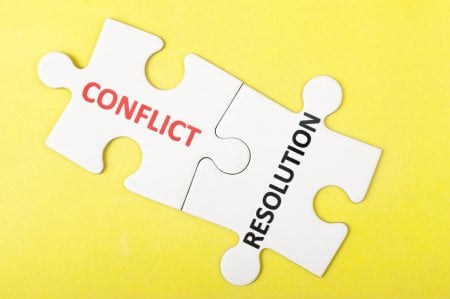Conflict-Resolution Tips and Techniques
Fitting The Pieces Together

The Benefits of Conflict-Resolution
Conflict-resolution is a great technique for rebuilding and maintaining relationships because it encourages communication. Instead of having yelling matches across the room, conflict-resolution forces you to work with your partner to find a solution to your problem. You both must come to an agreement and a consensus as to how you will proceed through this difficulty or disagreement. This can sometimes be very challenging for couples, but the reward is building a stronger foundation and a stronger relationship with your partner.
1. Identify The Issue
If you and your partner have started to argue about something or you fundamentally disagree on something, first, identify what it is that you are fighting about. Take a moment to pause with your partner, and instead of yelling at each other back and forth, try to pause and think about the issue individually before making any comments to each other. Just taking this moment to think will help you both avoid saying a lot of things that you might regret saying later.
Avoiding the Fights

2. Listen To Each Other
Even if you completely disagree with each other, it is still important for you to listen to each other and consider each perspective. Instead of yelling at each other, give your partner the time to calmly explain their viewpoint on the topic. Without getting angry and upset, try and look at the situation from their point of view. Picture in your mind why it is reasonable or understandable that they may have a different position than you on this topic. When it is your turn to share, calmly explain your perspective to your partner.
3. Brainstorm Solutions
This step in the process can sometimes be the most challenging. Depending on the situation, it might be very easy or very difficult to come up with solutions to your problem. At this stage in the process, it is a good idea for both of you to take some time apart to think about some possible solutions to the problem. Find a quiet place for you to think and take a notepad and paper with you if you need to. Think about all of the points that you and your partner brought up, and then brainstorm ideas on how you both can come up with a solution or a compromise to your problem. When you have finished, meet back up with your partner to discuss the solutions you came up with.
Effective Communication

4. Communicate Your Ideas
Take the time to explain your solutions to your partner, and to listen to what ideas they came up with. Decide together on what seems to be the easiest solution to your problem. If you both have a particular solution that you agree upon, use that. As you are communicating this, also indicate to your partner that you respect their opinion. It is always good to make sure your partner knows that you are not mad at them and that you appreciate them taking the time to work through a conflict with you. The more that you effectively communicate like this with your partner, the easier it will become and the happier you both will be overall with your decisions as a couple.
5. Come Up With An Agreement
Once you have decided on a solution, come up with an agreement. Make a plan for how the both of you will avoid this conflict in the future based on the solution. If there is anything else on your mind about this, take the time to communicate this with your partner now. The more detailed you are about your feelings, the easier it is going to be for you and your partner to understand each other's perspectives. Reaching this agreement stage is the most rewarding part of the conflict-resolution process. Be proud that you both have avoided a long argument and instead have dealt with the situation in a healthy way. Hopefully this will inspire you both to continue using this format in your future conflicts.








